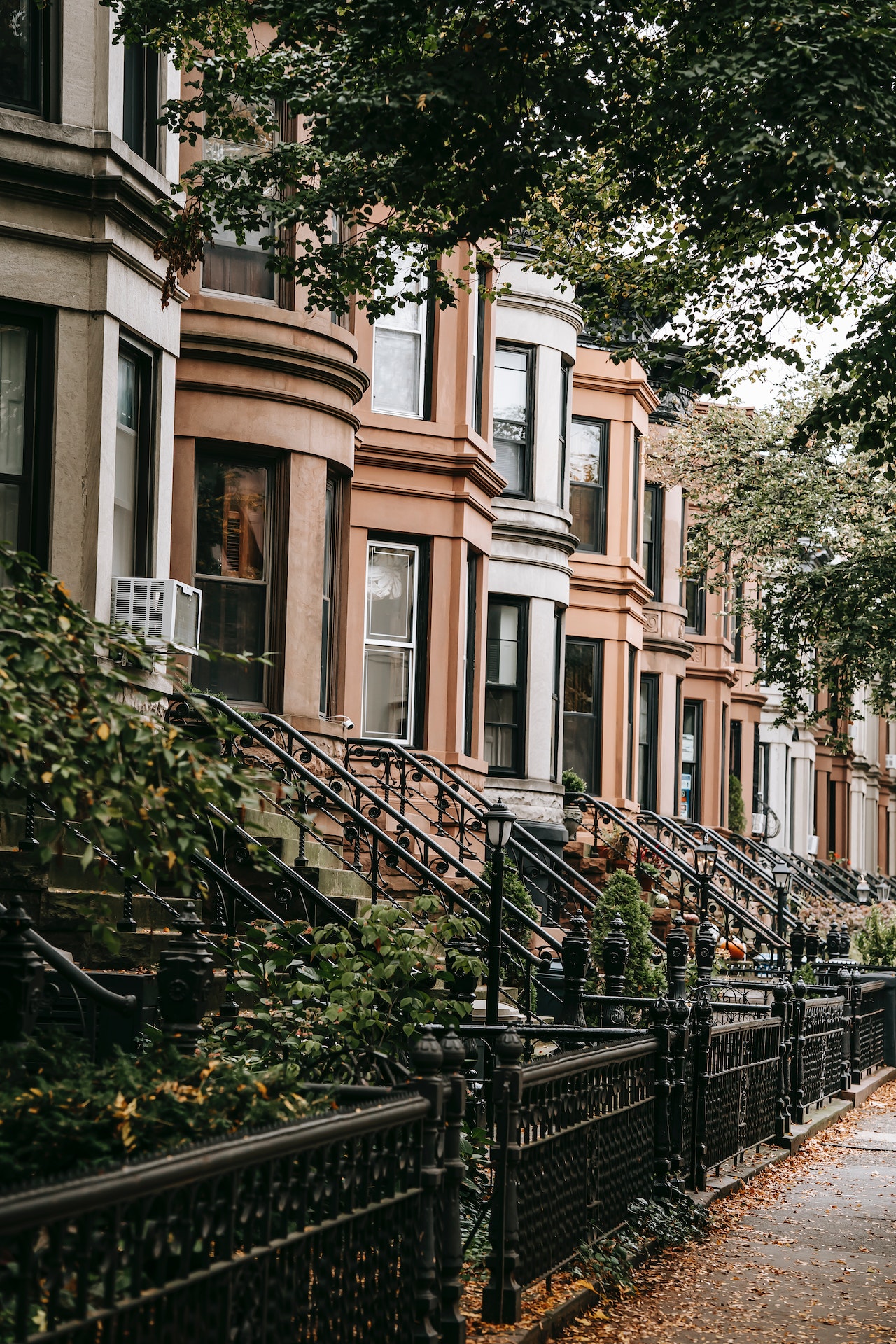Community-Oriented Design - A Holistic Approach To Architecture
Community-oriented design, also known as community-based design, is a design approach that involves the community in the design process to ensure that the design is in line with their needs and aspirations.
Author:George EvansApr 08, 2023736 Shares122.7K Views

Community-oriented design, also known as community-based design, is a design approach that involves the community in the design process to ensure that the design is in line with their needs and aspirations.
It is a collaborative approach that involves the active participation of the community in the design and development process of their built environment.
Community-oriented design aims to create buildings, spaces, and structures that are functional, aesthetically pleasing, and reflective of the community's culture and identity.
In this article, we will explore the concept of community-oriented design, its benefits, and examples of successful projects.
What Is Community-oriented Design?
Community-oriented design, also known as community-based design, is an approach to design that involves active collaboration with the people who will use and be affected by the designed spaces or products.
This approach emphasizes the importance of listening to and incorporating the needs, wants, and values of the community into the design process.
The goal of community-oriented design is to create spaces and products that meet the unique needs of a community and enhance their quality of life. This approach is commonly used in architecture, urban planning, and product design.
Community-oriented Design Principles
Community-oriented design is an approach to design that prioritizes the needs and aspirations of a community in the development of public spaces, buildings, and infrastructure. The following are some of the principles that guide community-oriented design:
- Collaboration and engagement:Community-oriented design involves active collaboration and engagement between designers, community members, and other stakeholders to ensure that the needs and priorities of the community are reflected in the final design.
- Inclusivity and accessibility:Community-oriented design prioritizes inclusivity and accessibility, ensuring that the design is welcoming and accessible to all members of the community, regardless of age, ability, or background.
- Sustainability and resilience:Community-oriented design aims to create sustainable and resilient spaces that can adapt to changing needs and environments, while minimizing the impact on the environment.
- Context and identity:Community-oriented design takes into account the unique context and identity of the community, reflecting the cultural, historical, and social characteristics that shape the community's identity.
- Flexibility and adaptability:Community-oriented design allows for flexibility and adaptability in the design, enabling the space to evolve and change over time in response to the needs of the community.
By applying these principles, community-oriented design can create public spaces and infrastructure that are more responsive, inclusive, and sustainable, meeting the needs and aspirations of the community in a meaningful way.

Chris Rudd Breaks Down Community-Centered Design
Why Is Community-oriented Design Important?
Community-oriented design is important for several reasons. Firstly, it helps to create spaces that are designed with the specific needs and desires of the local community in mind, which can lead to a stronger sense of ownership and pride in the area.
This, in turn, can help to promote social cohesion and a sense of community spirit.
Secondly, community-oriented design can help to address social, economic, and environmental issues that are specific to a particular community.
For example, a community-oriented design approach might involve creating green spaces in an urban area that is lacking in natural vegetation, or designing public spaces that promote accessibility for people with disabilities.
Finally, community-oriented design can help to promote more sustainable and resilient communities.
By involving local stakeholders in the design process and taking into account their needs and priorities, community-oriented design can lead to solutions that are more likely to be accepted and supported by the community over the long-term.
Overall, community-oriented design is an important approach that can help to create more livable, sustainable, and equitable communities for all.
How Is Community-oriented Design Implemented?
Community-oriented design is a collaborative and participatory process that involves the community in the design and planning of public spaces, buildings, and infrastructure.
The approach aims to create spaces and structures that are more responsive to the needs and desires of the people who live, work, and use them.
One of the key benefits of community-oriented design is that it can lead to more equitable and inclusive outcomes.
When communities are involved in the design process, they can ensure that their perspectives and values are represented, and that their needs are met.
This can help to create spaces that are more welcoming and accessible to everyone, regardless of their background or socioeconomic status.
Another benefit of community-oriented design is that it can lead to more sustainable and resilient outcomes.
By involving the community in the design process, designers can better understand the unique environmental and social factors that influence a particular site, and can design structures and spaces that are more responsive to these factors.
This can help to reduce environmental impacts, improve the quality of life for residents, and enhance the resilience of communities in the face of natural disasters and other crises.
Examples Of Community-oriented Design
One excellent example of community-oriented design is the High Line in New York City. The High Line is a 1.45-mile-long elevated linear park that was built on a former railroad track.
The design process involved extensive community engagement, including public meetings, workshops, and surveys, to ensure that the park would meet the needs and desires of the local community. The result is a unique public space that has become a beloved community gathering place.
Another example is the Papakura Library and Community Hub in Auckland, New Zealand. The design process involved an extensive consultation process with the local community, including a range of workshops, meetings, and surveys.
The design team used this feedback to create a space that reflects the cultural context and needs of the community, including spaces for community events, workshops, and gatherings.
People Also Ask
How Does Community-oriented Design Benefit Communities?
Community-oriented design benefits communities by involving them in the design process and addressing their specific needs and concerns. It creates spaces that are more functional and enjoyable for the people who will use them.
What Are Some Examples Of Community-oriented Design Projects?
Some examples of community-oriented design projects include public parks, community centers, and affordable housing developments. These projects are designed with the needs of the community in mind and often involve input from community members.
How Does Community-oriented Design Differ From Traditional Design Methods?
Community-oriented design differs from traditional design methods in that it prioritizes the needs and input of the community in the design process. Traditional design methods may be driven more by aesthetics or the preferences of the designer.
What Are Some Challenges In Implementing Community-oriented Design?
Some challenges in implementing community-oriented design include lack of funding, difficulty in engaging community members, and navigating local regulations and zoning laws.
What Are Some Key Principles Of Community-oriented Design?
Key principles of community-oriented design include collaboration with community members, consideration of local context and culture, and prioritization of social and environmental sustainability.
Final Words
Community-oriented design is an approach that prioritizes the needs and desires of a community when designing and planning a space or project.
This design approach emphasizes collaboration and communication between designers and the community, ensuring that the final product reflects the values, priorities, and aspirations of the people who will use it.
By fostering a sense of ownership and pride in the built environment, community-oriented design can create more inclusive and equitable spaces, foster social cohesion, and enhance the well-being of the community.
As such, it is an essential tool for creating sustainable and vibrant communities that meet the diverse needs of their residents.

George Evans
Author
George Anderson, an exceptional architectural designer, envisions and brings to life structures that transcend the realm of imagination. With an unwavering passion for design and an innate eye for detail, George seamlessly blends form and function, creating immersive spaces that inspire awe.
Driven by a deep appreciation for the interplay of space, light, and materials, George's innovative approach redefines the possibilities of architectural design. His visionary compositions leave an indelible mark, evoking a sense of wonder and transforming the built environment.
George Anderson's transformative designs and unwavering dedication continue to shape the architectural landscape, pushing the boundaries of what is possible and inspiring generations to come.
Latest Articles
Popular Articles